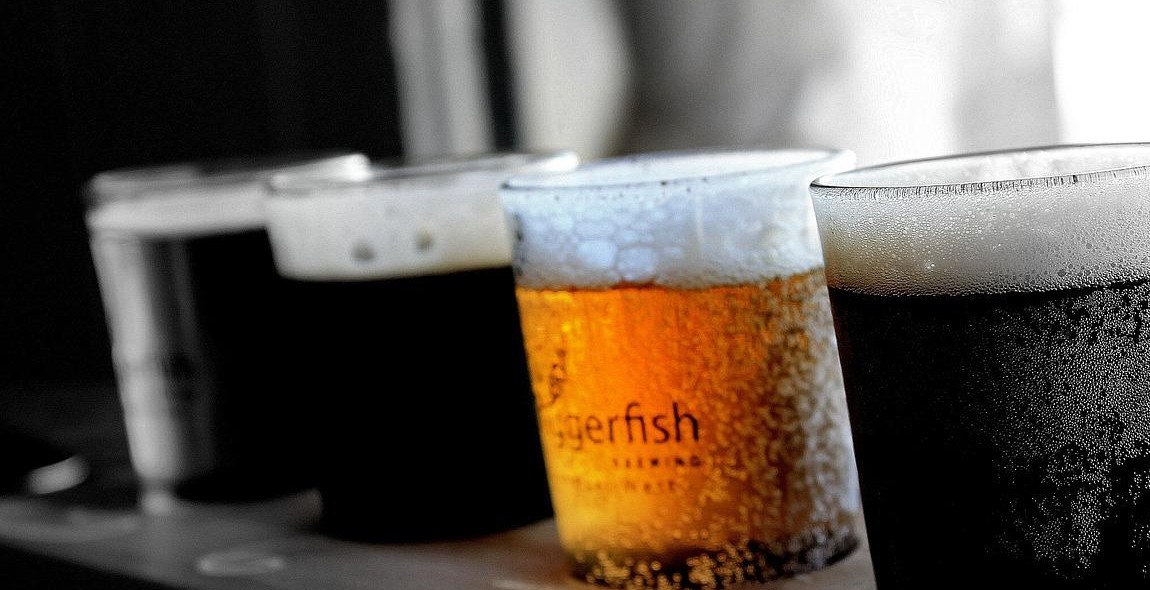How to Appreciate and Evaluate Different Beer Styles: Guide to Understanding the Characteristics of Beer
As a professional writer and content creator, I have had the opportunity to explore different cultures and lifestyles. One of the things that fascinate me the most is the art of beer brewing. From the first time I tasted beer, I was hooked. The bitterness, the sweetness, and the aroma were alluring. Beer is more than just a drink; it’s a culture, a way of life.
Over the years, I have learned to appreciate and evaluate different beer styles. I have tasted countless beers and learned about their origins, ingredients, and brewing processes. Understanding the characteristics of beer is essential to appreciate and evaluate different beer styles. From IPAs to stouts, each beer style has its unique features that make it stand out.
In this guide, I will share my personal experience with beer and teach you how to appreciate and evaluate different beer styles. I will cover the essential characteristics of beer, including aroma, appearance, flavor, and mouthfeel. I will also provide tips on how to taste beer like a pro, and how to pair beer with food.
If you’re a beer lover or just curious about the art of beer brewing, this guide is for you. Get ready to embark on an exciting journey into the world of beer!
Understanding Beer Styles
Beer is a popular alcoholic beverage that has been enjoyed by people all over the world for centuries. It is made from four main ingredients: water, yeast, hops, and malted barley. These ingredients are combined in different proportions and brewed in various ways to create different types of beer with unique flavors, aromas, and characteristics.
What Makes Beer Unique?
Beer is a versatile beverage that can be enjoyed in a variety of settings and occasions. It can be served cold or at room temperature, in bottles or cans, and in different glassware depending on the type of beer. Beer is also unique in that it has a wide range of flavors, colors, and aromas that are influenced by factors such as the brewing process, ingredients, and aging.
Different Types of Beer
There are many different types of beer, each with its own unique characteristics and flavor profiles. Some of the most popular types of beer include:
- Pilsner: A light-bodied beer that is crisp and refreshing, with a slightly bitter finish.
- IPA: An India Pale Ale is a hoppy beer that is often bitter with a citrus or floral aroma.
- Stout: A dark beer with a roasted flavor and a creamy texture.
- Wheat Beer: A beer made with wheat instead of barley, often with a light and fruity flavor.
- Belgian Ale: A beer that is typically fruity and spicy, often with a high alcohol content.
These are just a few examples of the many different types of beer that are available. Each type of beer has its own unique flavor profile and characteristics that make it distinct from other types of beer.
Understanding Beer Characteristics
When evaluating different beer styles, it is important to understand the characteristics that make each beer unique. Some of the characteristics to consider include:
| Characteristic | Description |
|---|---|
| Color | The color of the beer can range from light straw to dark brown or black. |
| Flavor | The flavor of the beer can be sweet, bitter, sour, or a combination of these flavors. |
| Aroma | The aroma of the beer can be fruity, floral, spicy, or malty. |
| Body | The body of the beer can be light, medium, or full, depending on the type of beer. |
| Alcohol Content | The alcohol content of the beer can range from low to high, depending on the type of beer. |
By understanding these characteristics, you can better appreciate and evaluate different beer styles and find the ones that you enjoy the most.

Appreciating Beer Styles
Beer is a versatile drink with a wide range of styles, each with its unique characteristics. Here are some tips to help you appreciate and evaluate different beer styles:
Tasting Beer
When tasting beer, it’s essential to use all your senses. Start by looking at the beer’s color and clarity, then smell the aroma, and finally, taste it. Consider the following when tasting beer:
- Appearance: The appearance of beer tells a lot about the style. For instance, a dark beer is likely to have a roasted flavor, while a light beer is likely to be crisp and refreshing.
- Aroma: The aroma of beer is an essential part of the tasting experience. Different beer styles have different aromas. For instance, an IPA is likely to have a citrusy or piney aroma, while a porter is likely to have a chocolatey or coffee aroma.
- Flavor: The flavor of beer is crucial in determining its style. Different beer styles have different flavors. For instance, a Belgian wheat beer is likely to have a spicy and fruity flavor, while a stout is likely to have a roasted and bitter flavor.
- Mouthfeel: The mouthfeel of beer is the sensation you get when you drink it. Some beer styles have a light and crisp mouthfeel, while others have a thick and chewy mouthfeel.
Pairing Beer with Food
Pairing beer with food is an excellent way to enhance your tasting experience. Here are some tips to help you pair beer with food:
- Match Intensity: Pair beer with food of similar intensity. For instance, a light beer pairs well with light dishes like salads, while a heavy beer pairs well with heavy dishes like steak.
- Match Flavor: Pair beer with food of similar flavor. For instance, a citrusy beer pairs well with fish tacos, while a chocolatey beer pairs well with chocolate cake.
- Contrast: Pair beer with food that has contrasting flavors. For instance, a hoppy beer pairs well with spicy food, while a sweet beer pairs well with salty food.
Serving Beer Properly
Serving beer properly is essential in enhancing its taste and aroma. Here are some tips to help you serve beer properly:
- Temperature: Different beer styles have different temperature requirements. For instance, a light beer is best served cold, while a dark beer is best served at room temperature.
- Glassware: Different beer styles have different glassware requirements. For instance, a pilsner glass is best for a pilsner beer, while a tulip glass is best for a Belgian ale.
- Pouring: Different beer styles require different pouring techniques. For instance, a wheat beer should be poured with a lot of foam, while a stout should be poured with a little foam.
| Beer Style | Temperature | Glassware |
|---|---|---|
| Pilsner | Cold | Pilsner Glass |
| IPA | Cool | Pint Glass |
| Stout | Room Temperature | Pint Glass |
| Belgian Ale | Warm | Tulip Glass |
Evaluating Beer Styles
When it comes to evaluating beer styles, there are several factors that come into play. These include appearance, aroma, flavor, mouthfeel, and overall impression. Let’s take a closer look at each of these factors:
Appearance
Appearance refers to the color, clarity, and head of a beer. A beer’s color can range from pale yellow to dark brown, and everything in between. Clarity refers to how clear or cloudy the beer is. A head is the foam that forms on top of the beer when it is poured. The appearance of a beer can give you an idea of what to expect in terms of flavor and aroma.
Aroma
The aroma of a beer is the scent that you get when you first smell it. A beer’s aroma can be influenced by the hops, malt, yeast, and other ingredients used in its production. The aroma can range from fruity and floral to spicy and earthy. The aroma is an important factor in evaluating a beer because it can give you an idea of what to expect in terms of flavor.
Flavor
The flavor of a beer is the taste that you get when you drink it. A beer’s flavor can be influenced by the same factors that affect its aroma. The flavor can range from sweet and malty to bitter and hoppy. The flavor is perhaps the most important factor in evaluating a beer because it is what you will remember most about the beer.
Mouthfeel
Mouthfeel refers to the texture and body of a beer. A beer can be thin and watery, or thick and creamy. The mouthfeel can be influenced by the ingredients used in the beer, as well as the brewing process. The mouthfeel is an important factor in evaluating a beer because it can affect your overall enjoyment of the beer.
Overall Impression
Overall impression refers to your overall opinion of the beer. This includes how well the beer balances its various flavors and aromas, as well as how well it meets your expectations for its style. The overall impression is the final factor in evaluating a beer, and it is what will ultimately determine whether or not you enjoy the beer.
| Factor | Description |
|---|---|
| Appearance | Color, clarity, and head |
| Aroma | Scent and aroma |
| Flavor | Taste and flavor |
| Mouthfeel | Texture and body |
| Overall Impression | Overall opinion of the beer |
By evaluating these factors, you can gain a better understanding of the characteristics of different beer styles. This can help you appreciate and enjoy beer on a deeper level.

Conclusion
After reading this guide, you should have a better understanding of the different beer styles and their characteristics. It’s important to appreciate and evaluate each style based on its unique qualities and not just its popularity.
Remember, taste is subjective, and what one person may enjoy, another may not. However, by knowing the basic characteristics of each style, you can better identify what you like and make more informed decisions when choosing a beer.
Final Thoughts
Beer is a complex and diverse beverage that has been enjoyed for centuries. Understanding its many styles and characteristics can enhance your appreciation and enjoyment of this drink.
Whether you are a seasoned beer enthusiast or just starting to explore the world of craft beer, there is always something new to discover and appreciate. So, grab a pint, sit back, and cheers to the many wonderful styles of beer available.
Pro Tip:
Next time you try a new beer, take a moment to evaluate its appearance, aroma, flavor, and mouthfeel. Try to identify the different characteristics of the beer and compare them to its style guidelines. This will help you develop your palate and become a more knowledgeable beer drinker.
| Beer Style | Color | Flavor Profile | ABV Range |
|---|---|---|---|
| Pale Ale | Pale to amber | Bitterness with citrus or floral notes | 4.0-7.0% |
| Stout | Dark brown to black | Roasted malt, chocolate, and coffee flavors | 4.0-7.0% |
| Wheat Beer | Light to pale yellow | Light and refreshing with fruity and spicy notes | 4.0-7.0% |
- Appreciate and evaluate each beer style based on its unique characteristics.
- Understand the importance of taste and how it can vary from person to person.
- Identify the basic characteristics of each beer style to make more informed decisions when choosing a beer.
